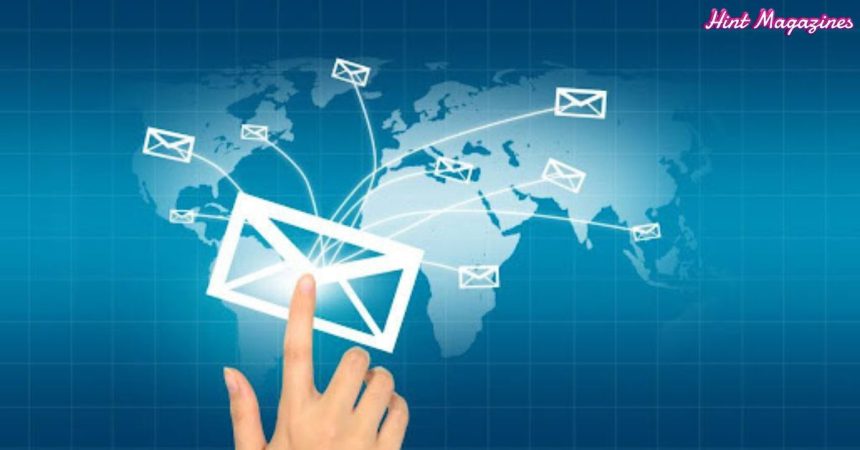Efficient mailroom is crucial for handling both physical and digital documents quickly and securely. The concept of a mailroom has evolved from a simple space for sorting and distributing mail to a digitally driven, high-tech operation that seamlessly integrates with broader business workflows. Traditional mailrooms that rely on manual processes are struggling to keep up with the demands of a digital-first world. They often result in high labor costs, lost productivity, and security issues that slow down operations and can expose a business to unnecessary risks.
By digitizing and streamlining mail handling, modern mailroom technology has transformed how businesses handle documents, saving time, cutting costs, and enabling remote access for distributed teams. For companies managing high volumes of mail and confidential documents, mailroom automation is no longer a luxury; it’s a necessity that keeps businesses competitive, secure, and efficient.
Challenges of Traditional Mailroom Operations
Despite their importance, traditional mailrooms face a range of challenges that can create inefficiencies and increase operational costs.
High Operational Costs
Traditional mailrooms require a significant investment in human resources for tasks like sorting, filing, and distributing mail. Each manual step adds costs, as staff members spend hours managing documents that could otherwise be automated. Additionally, physical storage needs escalate, with companies dedicating costly real estate to store and organize paper documents. This lack of efficiency ultimately raises operational expenses, and as a business grows, these costs scale up accordingly.
Limited Tracking and Visibility
Tracking documents manually can be difficult and unreliable. Important packages or documents are often misplaced or delayed because of limited tracking capabilities. Without a clear, centralized record of where documents are at any given time, employees may waste hours locating misplaced mail. This lack of visibility not only interrupts workflows but also can lead to missed deadlines and operational delays, ultimately slowing down decision-making and affecting overall productivity.
Slow Processing Times
Manual handling of mail and documents creates bottlenecks. Each step, from receiving to sorting to distributing, takes time, slowing down the flow of information. Slow processing times become even more problematic for companies operating in fast-paced industries, where quick access to information can be the difference between success and missed opportunities. In these environments, delays caused by traditional mail handling can impact client relations, productivity, and even revenue.
Security and Compliance Risks
Handling sensitive information through traditional mail processes exposes businesses to security risks. Without secure systems in place, confidential documents may be misplaced or accessed by unauthorized personnel. Additionally, traditional mailrooms struggle to meet regulatory compliance standards that require data protection and audit trails. For businesses in regulated industries such as healthcare, finance, and law, failing to secure mailroom operations could result in severe legal repercussions, damaging reputations and costing companies significant penalties.
Why Mailroom Technology Is Essential for Business
Mailroom technology offers solutions to these common challenges by bringing efficiency, transparency, and security to mail handling processes. Here’s why adopting mailroom automation is essential for modern business operations.
Enhanced Efficiency and Productivity
With mailroom automation, manual tasks like sorting, routing, and filing are significantly reduced. Advanced technologies like Optical Character Recognition (OCR) and automated document routing streamline the flow of mail. OCR can identify and process document details instantly, allowing mail to be scanned, sorted, and distributed in a fraction of the time it would take manually. By reducing human involvement in routine mail handling tasks, businesses can reallocate resources to focus on higher-value activities, resulting in improved productivity and a more efficient mailroom.
Improved Tracking and Transparency
Mailroom technology enables real-time tracking, giving businesses complete visibility into the status and location of each document from the moment it is received. With tools like barcodes, QR codes, and automated notifications, mailroom tech ensures timely delivery and reduces the risk of lost or misplaced items. This level of transparency helps employees know exactly where documents are and enables managers to keep operations running smoothly. Real-time tracking not only improves mailroom accountability but also allows for better management of deadlines and workflow coordination.
Cost Savings
Digital mailroom solutions can significantly reduce overhead by minimizing the need for physical storage. By converting physical documents to digital formats, companies reduce the costs associated with maintaining storage spaces and filing systems. Labor costs are also reduced, as mailroom automation decreases the need for manual sorting, tracking, and filing. Moreover, by avoiding lost or misplaced items, businesses save on replacement costs and avoid delays that could otherwise impact revenue. In fact, companies that adopt mailroom technology report an average of 30% savings in operating costs.
Increased Security and Compliance
Mailroom technology provides enhanced security features such as secure access controls, audit trails, and encryption, helping protect sensitive information from unauthorized access. For companies in regulated industries, these security protocols are essential for maintaining compliance with data protection regulations, such as HIPAA in healthcare and GDPR for companies operating in Europe. With access logs and tracking data, businesses can ensure that documents are handled by authorized personnel only, providing a layer of accountability and an audit trail that is essential for compliance reporting.
Supports Digital Transformation and Remote Work
In an increasingly digital business world, where remote work is becoming the norm, mailroom technology is essential for digital transformation. Mailroom automation digitizes physical mail, seamlessly integrating it into digital workflows. Documents are scanned, processed, and routed digitally, allowing employees to access them from anywhere. This functionality is particularly valuable for distributed teams and remote employees, as it eliminates the need for physical mail handling and enables workers to stay connected to business operations regardless of location. Digital mailrooms make it possible to streamline document management across departments and locations, keeping remote teams aligned and productive.
Mailroom Tech for Distributed Teams and Remote Work
With businesses moving toward hybrid and remote work models, mailroom tech is an indispensable tool for connecting teams and providing seamless document access.
Digital Access to Physical Mail
Digital mailrooms allow physical mail to be converted into digital formats and sent directly to employees’ inboxes. Remote teams can access these documents in real-time, eliminating delays associated with forwarding physical mail. This capability allows employees to stay up-to-date, improving productivity and reducing the need for constant on-site presence.
Cloud-Based Document Storage
Mailroom technology often includes secure, cloud-based storage for archiving digital documents. Cloud storage allows employees from any location to access archived documents quickly and securely, eliminating the need for physical retrieval. Cloud access also supports continuity, as teams can access necessary information from different offices or home workspaces without interrupting workflows.
Increased Collaboration and Efficiency
Digital mailrooms foster collaboration by allowing multiple team members to access and share documents without needing to be on-site. This capability is especially valuable for projects requiring input from multiple departments, as it ensures that everyone involved has access to the same, up-to-date information. By streamlining document access, digital mailrooms enhance team collaboration, enabling projects to move forward without unnecessary delays.
Essential Features of Modern Mailroom Technology
Adopting mailroom tech offers various features that drive efficiency and ensure secure handling:
- Automated Sorting and Document Routing: AI and OCR-powered technology allows automated sorting and routing of mail to the correct recipients or departments, improving accuracy and speed.
- Digital Scanning and Archiving: Converting physical mail to digital format reduces storage needs and allows for quick retrieval, creating an organized, easily accessible document archive.
- Integration with Business Systems: Mailroom tech can integrate with ERP, CRM, and document management systems, streamlining information flow and ensuring consistent access to documents.
- Real-Time Tracking and Notifications: Automated tracking provides transparency, and notifications alert employees to the arrival and status of critical documents.
- Advanced Security and Access Controls: Mailroom tech secures sensitive data with controlled access, authentication, and logging features, ensuring regulatory compliance and data protection.
Industries That Benefit Most from Mailroom Technology
Although all industries can benefit from mailroom automation, some see even greater advantages due to specific regulatory or operational needs:
- Financial Services: Ensures secure handling and quick access to critical financial documents, supporting compliance with data privacy laws.
- Healthcare: Improves patient record handling and HIPAA compliance, protecting sensitive health information with secure access controls.
- Legal Services: Manages case files and confidential documents efficiently, with enhanced security to protect client information.
- Manufacturing and Logistics: Supports efficient communication across departments and smooth document tracking for logistics and supply chain operations.
Conclusion
Mailroom technology has evolved beyond simple mail handling to become a strategic asset that enhances productivity, security, and flexibility in the modern workplace. With mailroom automation, businesses gain efficiency, reduce operational costs, and support remote work by enabling easy, secure access to information across locations.
By embracing this technology, companies can improve document management, safeguard sensitive information, and drive digital transformation. As mailroom tech continues to advance, businesses equipped with these tools will be better prepared to compete in an increasingly connected, digital world, where agility and secure access to information are key to long-term success.





